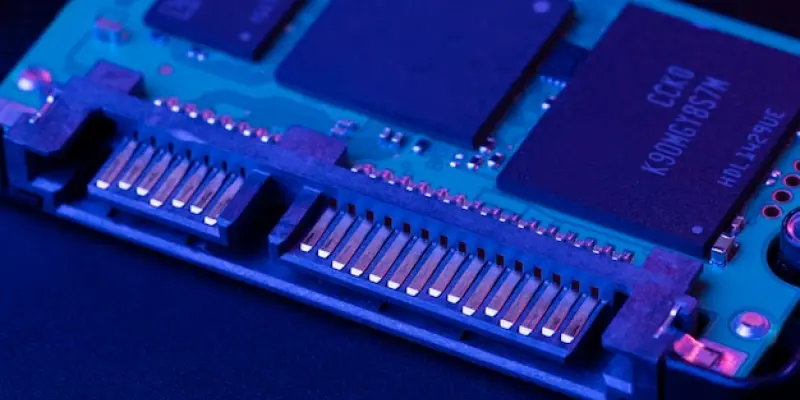Intel’s relentless pursuit of technological advancement continues to shape the landscape of high-performance computing. Recently, the company introduced a new innovation for its desktop CPUs, the LGA 1954 socket, which will be implemented with the Nova Lake-S CPUs. This new socket will replace the current LGA 1851, first appearing with the Arrow Lake-S “Core Ultra Series 2” CPUs introduced last year. While the LGA 1851 showcased improvements in multi-threading and efficiency, Intel aims to address its gaming performance shortcomings with the upcoming Nova Lake-S.
The LGA 1954 Socket Unveiled
Enhancing Core Counts and Performance
The upcoming Nova Lake-S CPUs, using the newly introduced LGA 1954 socket, symbolize a significant step forward in CPU architecture and performance. With configurations potentially reaching up to 16 P-Cores and 32 E-Cores, these CPUs are poised to offer substantial performance boosts for both desktop and laptop users. Unlike their predecessors, Nova Lake-S CPUs will cater not only to multitasking efficiency but also to robust gaming performance. The transition from the LGA 1851 to the LGA 1954 underscores Intel’s strategy of evolving its hardware to meet the demands of modern computing environments.
The shift to the LGA 1954 socket aligns with Intel’s historical approach of updating sockets to support enhanced CPU capabilities. Previous models, such as Alder Lake and Raptor Lake, utilized the LGA 1700/1800 sockets, while Arrow Lake marked the beginning of LGA 1851 usage. Nova Lake, expected to launch in the latter half of 2026, will not only benefit from a higher core count but will also integrate advancements enabling smoother, more efficient operations across a range of applications, including resource-intensive tasks and high-performance gaming.
Integration with 900-Series Chipset
Alongside the new LGA 1954 socket, Intel plans to introduce the 900-series chipset motherboards, which will house the Nova Lake-S CPUs under the Core Ultra Series 4 family. This integration represents Intel’s proactive approach to improving compatibility and performance. Moreover, the future Razer Lake generation is expected to also utilize the LGA 1954 socket, emphasizing Intel’s commitment to maintaining consistency and maximizing the potential of its cutting-edge CPU designs.
This move is part of a broader trend within Intel’s strategy to regularly refresh its desktop CPU lineup. By introducing new sockets and updating core counts every few years, Intel ensures that its CPUs remain at the forefront of technological advancement. For consumers, this means access to improved computing power, efficiency, and performance, ready to take on the challenges of modern software and applications.
The Broader Implications
Competitive Performance in Multi-threading
Intel’s introduction of the LGA 1954 socket and the resulting potential for higher core counts aim to address the increasing demand for greater multi-threading capabilities. Multi-threading, essential for tasks such as video editing, 3D rendering, and server operations, is significantly enhanced by higher core counts. The planned configurations for Nova Lake-S CPUs will thus cater not only to gaming enthusiasts but also to professionals requiring substantial computing power.
By ensuring that each new iteration of its desktop CPUs supports incremental gains in multi-threading efficiency, Intel is poised to maintain its competitive edge in an industry where core architecture and performance are paramount. The LGA 1954 socket, coupled with the 900-series chipset, will likely usher in a new era of high-performance computing, optimizing resource allocation and execution speed across various applications.
Sustaining Market Leadership
The introduction of the LGA 1954 socket and Nova Lake-S CPUs reaffirms Intel’s commitment to sustaining market leadership in high-performance computing. As these innovations come to the market, Intel remains focused on pushing the boundaries of what’s possible with desktop CPUs. Competitors will undoubtedly take note, but Intel’s consistency in delivering groundbreaking technology sets a high benchmark in the industry.
With Nova Lake-S launching in 2026, consumers can anticipate significant improvements in processing power and efficiency. Intel’s dedication to regular updates and enhancements ensures that both professionals and everyday users benefit from the latest advancements, solidifying Intel’s position as a leader in the ever-evolving technological landscape.
Looking Ahead
Intel’s ongoing quest for technological progress continues to influence the realm of high-performance computing significantly. Recently, the tech giant unveiled a new innovation for its desktop processors: the LGA 1954 socket, which will be paired with the forthcoming Nova Lake-S CPUs. This new socket is set to replace the existing LGA 1851, which debuted with last year’s Arrow Lake-S “Core Ultra Series 2” processors. The LGA 1851 had enhanced multi-threading and efficiency, marking a notable step forward. However, Intel identified some shortcomings in gaming performance with the LGA 1851. To address these, they developed the Nova Lake-S CPUs, which are expected to bring substantial improvements in this area.
The company’s continuous innovations ensure they remain at the forefront of the industry, addressing previous deficiencies while pushing the envelope in computing performance. As Intel introduces these upgrades, they are poised to set new standards in desktop processor capabilities, meeting the evolving demands of both gamers and intensive computing users alike.

